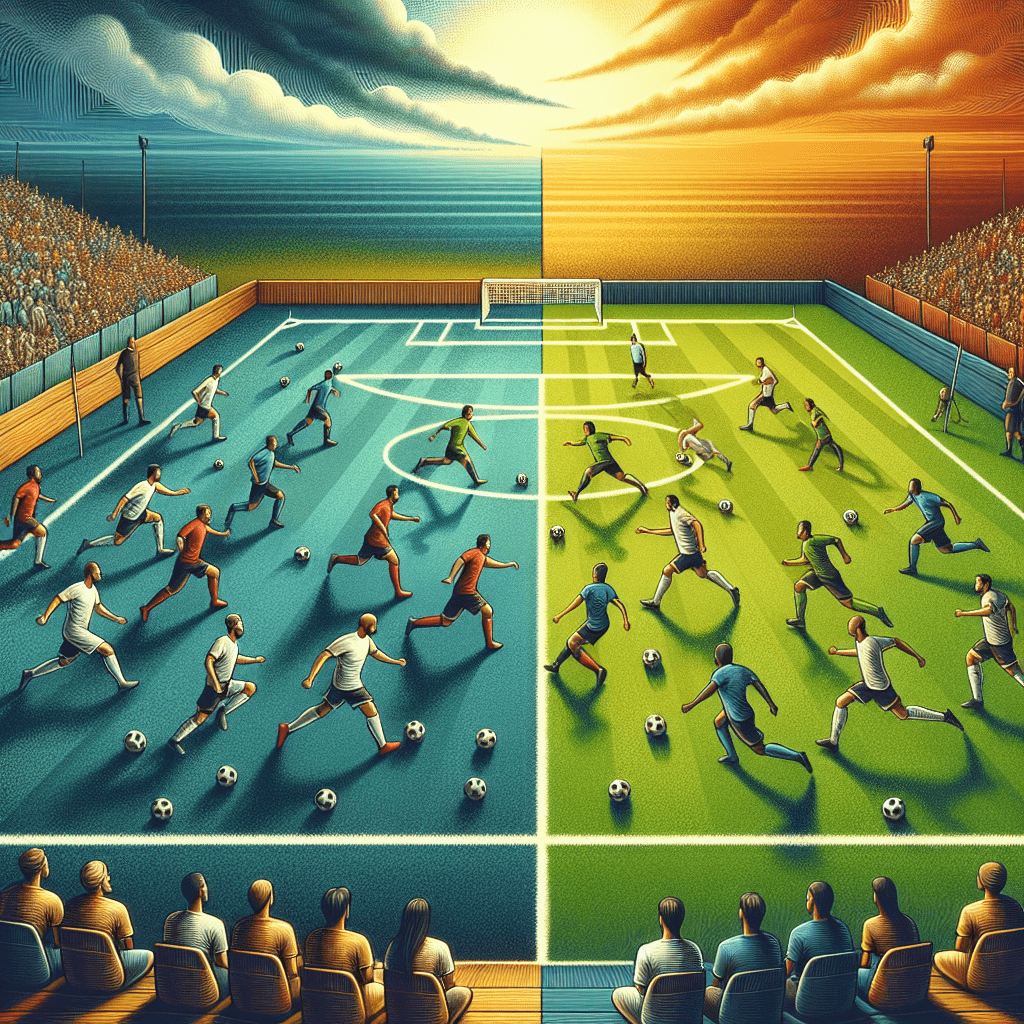[ad_1]
Analyzing the Tiki-Taka Revolution: How Short Passing Transformed Soccer
Introduction
The world of soccer has witnessed numerous tactical evolutions over the decades, but few have been as revolutionary or as aesthetically pleasing as the Tiki-Taka style of play. This method, characterized by its short passing and movement, possession-based philosophy, and high pressing, altered the landscape of modern soccer, influencing teams from grassroots to the pinnacle of international competition.
Origins of Tiki-Taka
Tiki-Taka’s origins are deeply rooted in Dutch total football but were refined and popularized by Spanish football. It’s a style that emphasizes skill, precision, and teamwork over physicality or long-ball strategies. The philosophy came to prominence under Johan Cruyff at Barcelona in the late 20th century and was perfected by his successors, most notably Pep Guardiola.
The Principles of Tiki-Taka
Tiki-Taka is built on several core principles: maintaining possession, short passing, player movement, and pressing. The objective is not just to control the ball but to control the game, dictating the pace and rhythm through relentless passing and movement. Every player, including the goalkeeper, is involved in building play from the back, with the ball almost always staying on the ground.
The Transformation of Barcelona
Barcelona FC stands as the epitome of the Tiki-Taka revolution. Under Pep Guardiola, Barcelona enjoyed one of the most successful eras in their history, winning numerous titles including the UEFA Champions League and multiple La Liga crowns. Players like Xavi, Iniesta, and Messi became synonymous with this style, showcasing that success could be achieved through skill and intelligence over brute strength.
Influence on International Soccer
The impact of Tiki-Taka was most vividly illustrated by the Spanish national team. Between 2008 and 2012, Spain dominated international soccer, winning two UEFA European Championships and one FIFA World Cup. The team’s style of play was a mirror image of Barcelona’s, with many of the same players executing those same principles on the global stage.
The Legacy and Evolution of Tiki-Taka
Tiki-Taka has left an indelible mark on soccer, changing how teams think about ball possession, spacing, and player movement. Its principles have been adapted and evolved by teams around the world, each adding their own twist to the philosophy. Today, while the pure form of Tiki-Taka might not be as prevalent, its influence is seen in the high defensive lines, the emphasis on pressuring the opposition high up the pitch, and the focus on maintaining possession that characterizes many of the top teams globally.
Critiques and Challenges
While the success of Tiki-Taka is undeniable, it has not been without criticism. Some argue that the style can lead to a lack of directness, making it easier for well-organized defenses to neutralize attacks. Moreover, the rigorous demand for technical proficiency across the team means that it is a difficult style to implement, requiring a specific type of player in every position.
The Future of Tiki-Taka
As soccer continues to evolve, so too does the philosophy of Tiki-Taka. Coaches like Guardiola have demonstrated its adaptability, incorporating new elements such as increased verticality and flexibility in attack to counter the criticisms of predictability. The essence of Tiki-Taka – possession, passing, and pressing – remains relevant, suggesting that while the approach may undergo further evolution, its core principles will continue to influence the beautiful game.
Conclusion
The Tiki-Taka revolution has transformed soccer, demonstrating the power of intelligence, teamwork, and technique. Its success, both at the club level with Barcelona and internationally with Spain, has cemented its place in soccer history. As the game moves forward, the legacy of Tiki-Taka will undoubtedly continue to influence how soccer is played, taught, and thought about across the globe.
FAQs
What is Tiki-Taka?
Tiki-Taka is a style of play in soccer characterized by short passing, possession, and player movement. It emphasizes technical skill, intelligence, and teamwork.
Who developed Tiki-Taka?
While influenced by Dutch total football, Tiki-Taka was developed and popularized by Spanish teams, most notably FC Barcelona under Johan Cruyff and later perfected by Pep Guardiola.
Why is it called Tiki-Taka?
The term “Tiki-Taka” is onomatopoeic, derived from the Spanish expression ‘tiqui-taca’, which mimics the sound of a ball being passed quickly back and forth.
How did Tiki-Taka change soccer?
Tiki-Taka showed the effectiveness of possession-based play, inspiring a shift towards more technical and tactical styles across the soccer world. It has influenced the way the game is coached, played, and appreciated at all levels.
Can Tiki-Taka be effective against all types of teams?
While highly effective, Tiki-Taka requires highly skilled players and can sometimes struggle against teams that employ a highly defensive and physical approach. Adaptations and evolutions of the style have sought to address these challenges.
Is Tiki-Taka still being used today?
While the pure form of Tiki-Taka is less common, its principles continue to influence modern soccer. Many teams incorporate aspects of possession, short passing, and pressing into their strategy, showing the lasting impact of the Tiki-Taka revolution.
[ad_2]






